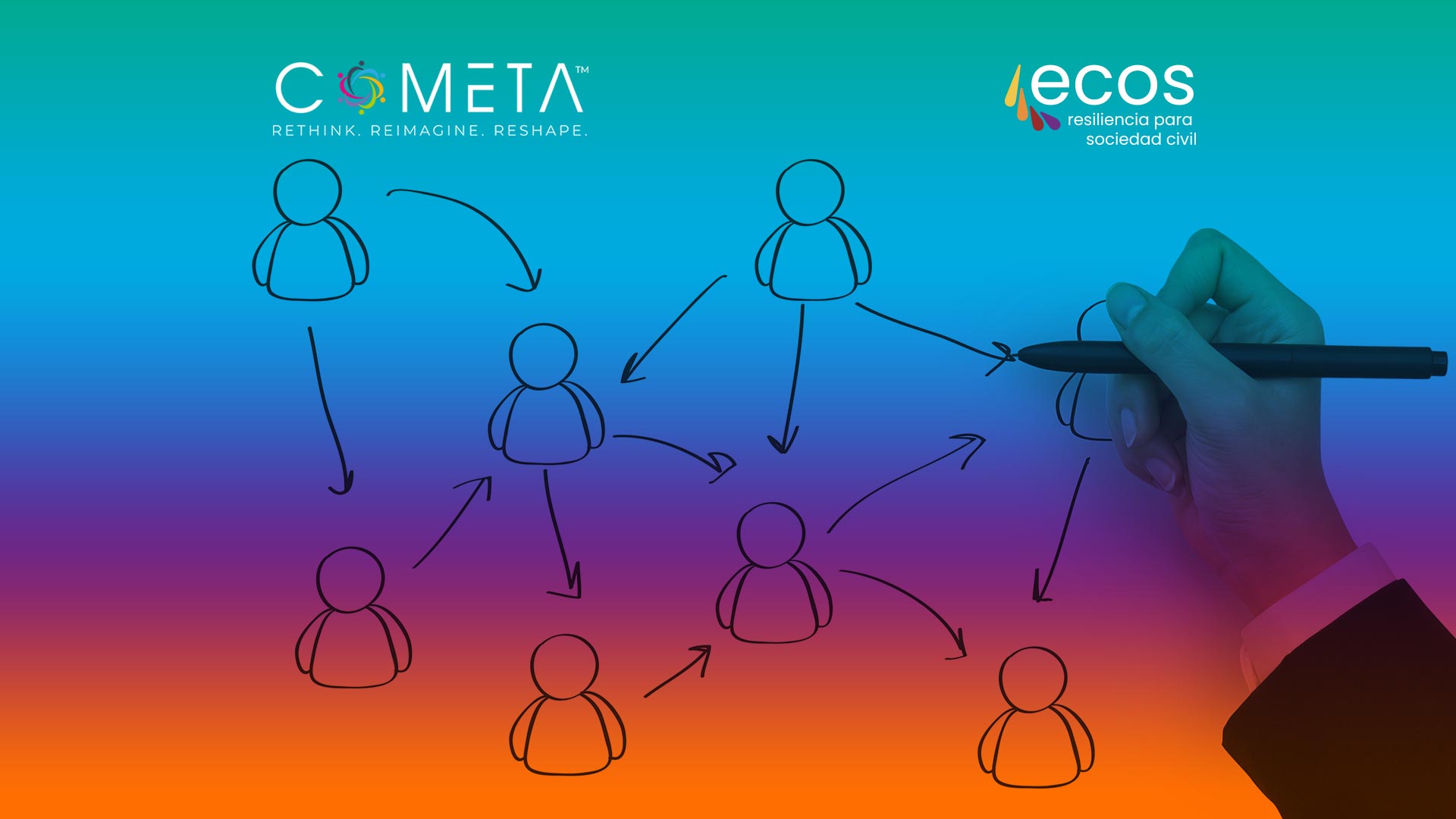When we talk about institutional development for civil society organizations, we’re referring to a key dimension –yet often overlooked– in the consolidation and sustainability of our work. One of its essential components is institutional design: that is, how our organization is structured in terms of frameworks, rules, processes, and internal dynamics. It’s not enough to simply have clarity about the cause we support or the projects we carry out.
Anna Langheinrich, Senior consultant at COMETA
If we want our organizations to be strong, resilient, and capable of long-term transformation, it’s crucial to pay attention to both how we organize ourselves and the continuous strengthening of our internal capacities.
Every solid organization has an established department—or at least a set of practices—focused on institutional development. It might not always go by that name or look the same across the board, but there’s always some mechanism aimed at reinforcing its structure, processes, team capabilities, and organizational culture. Therefore, institutionalizing institutional development isn’t a luxury, it’s a strategic investment.
How Are Institutional Design and Institutional Development Related?
Institutional design is a central pillar of institutional development—it’s the way we choose to organize our work: the areas that make up our organization, the roles we need, the processes and activities we carry out, the lines of authority, and the communication channels we use. When we talk about institutional development, we’re referring to a broader and ongoing process that includes, among other things, strengthening capacities, systematizing knowledge, and improving processes. All of this, however, rests on a well-thought-out institutional design.
Institutional design doesn’t mean creating rigid structures, it’s about intentionally defining the rules, roles, and dynamics that allow the organization to operate with clarity, coherence, and adaptability. A clear institutional design is what makes it possible for institutional development to move beyond individual will or moments of crisis—it becomes a sustained practice over time.
On the other hand, institutional development comprises all the actions, decisions, and tools that enable our organization to function strategically and sustainably. This includes:
- Building or revisiting our normative frameworks (bylaws, regulations, internal policies).
- Strengthening governance and decision-making structures.
- Managing knowledge and systematizing our experiences.
- Continuously improving administrative, financial, and operational processes.
- Designing evaluation and monitoring methodologies aligned with our values.
- Creating spaces for team learning and well-being.
Therefore, institutional development becomes a continuous practice that supports the entire organization and evolves with its different stages of life
Why Is It Important to Institutionalize It?
When institutional development isn’t explicitly and consistently woven into an organization’s day-to-day work, it often hinges on specific individuals, crisis situations, or one-off projects. This fragility exposes the organization to risk. That’s why institutionalizing institutional development means ensuring it has a defined place within our strategic priorities and operational structure.
Additionally, institutionalizing institutional development allows us to strengthen key areas that directly impact our capacity for action and long-term sustainability:
- Make more informed and participatory decisions. This helps build internal trust, prevent unnecessary conflicts, and make better use of our teams’ collective intelligence.
- Respond more effectively to changing contexts. An organization with clear structures and adaptive processes can shift strategies with agility without losing direction—something essential in unstable social and political settings
- Increase our legitimacy and transparency with donors and communities. When our work procedures are clear, coherent, and well-documented, we build greater credibility and strengthen relationships with key allies.
- Support our teams by avoiding overload and disorganization. A sound institutional design distributes responsibilities, clarifies roles, and creates better working conditions. Team strengthening is directly linked to institutional development—because when the rules of the game are clear, it’s easier to collaborate, learn, and thrive.
- Create an organizational culture aligned with our principles and purpose. It’s not just about what we do, but how we do it. A culture grounded in shared values strengthens team commitment, improves the work environment, and reinforces our collective sense of purpose.
Institutional Development Recommendations by Organizational Stage
1. If you are just starting out:
- Don’t underestimate institutional design from the very beginning. Even if there are only a few people, take the time to define basic operating rules, communication agreements, and decision-making processes.
- Document everything you learn. Institutional memory begins on day one.
- Create regular spaces for reflection. Ask yourselves what is working, what isn’t, and what you could do differently.
- Explore horizontal and flexible ways of organizing. When an organization is starting out, it is easier to experiment with less hierarchical structures and collaborative work approaches that foster participation, mutual learning, and adaptability. This is the ideal moment to innovate in how you organize yourselves, before dynamics become established that are harder to change later on.
2. If your organization already has some experience:
- Conduct a participatory institutional assessment. You can review your structures, processes, and tools from a collective and critical perspective.
- Examine how well your current work aligns with your present values and goals. A key document for this is your organization’s theory of change. This serves as the foundation for assessing whether your structure and approach are helping you achieve your desired change or impact.
- Strengthen knowledge management. Systematizing past experiences helps avoid mistakes, recover lessons learned, and improve planning.
- Invest in continuous training. Institutional development also involves building capacities within the team.
- Allocate specific resources. Whether it’s time, staff, or budget, institutional development requires a real and sustained investment.
Where to Start?
A good way to start—or to return to—this path is by asking ourselves: What organizational conditions do we need in place to achieve our desired impact?
It’s not about having a rigid or perfect structure, but one that guides us forward with clarity, coherence, and care.
Institutional development doesn’t have to be a solitary endeavor. There are experiences, tools, and processes that can accompany and enrich this journey. Many organizations we work with have discovered that linking this process to key moments—such as strategic planning, governance review, or impact evaluation—gives it greater strength and meaning.
Investing in What Is Often Unseen, Yet Sustains It All
Amid the rush of daily tasks, it’s easy to see why institutional development may not rise to the top of the list. But if we hope to endure, adapt, and care for those who make our work possible, we must turn institutional design for civil society organizations into a conscious, structured, and ongoing practice.
Just as we tend to our causes, cultivate our projects, and build our partnerships, we must also nourish how we organize—and how we walk forward together.





